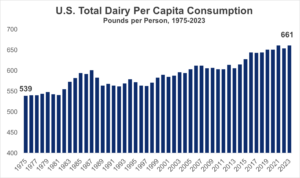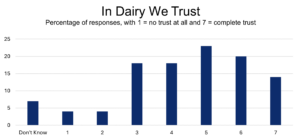NMPF thanked USDA and the dozens of farmers and cooperative leaders who successfully steered Federal Milk Marketing Order modernization to a successful conclusion.
“Dairy farmers and cooperatives have done what they do best – lead their industry for the benefit of all,” said Gregg Doud, president and CEO of NMPF. “This final plan will provide a firmer footing and fairer milk pricing, which will help the dairy industry thrive for years to come. We appreciate the monumental contributions across government and the dairy industry that made this happen. The industry, and all dairy consumers, owe all of you a debt of gratitude.”
The new FMMO comes after more than 200 NMPF-led meetings to formulate the proposal that contributed heavily to USDA’s final decision, as well as a record-length 49-day federal order hearing and approval from the farmers who are covered under all federal milk marketing orders.
The new federal milk-pricing system, which officially will be published in the Federal Register tomorrow, will mostly take effect June 1 – coincidentally, World Milk Day – and is closely aligned with the principles of NMPF’s member-led recommendations, a process that began nearly four years ago.
Highlights include:
- Returning the base Class I skim milk price formula to the higher-of the advanced Class III or Class IV skim milk prices for the month. In addition, adoption of a Class I extended shelf life (ESL) adjustment for all ESL products equal to the average-of mover plus a 24-month rolling average adjuster with a 12-month lag.
- Updating the Class III and IV manufacturing allowances for cheese, butter, nonfat dry milk and dry whey, and the butterfat recovery factor.
- Updating the Class I differential values to reflect the increased cost of servicing the Class I market.
- Updating skim milk composition factors, with implementation delayed six months until Dec. 1.
- Removing 500-pound barrel cheddar cheese prices from the Dairy Product Mandatory Reporting Program survey.
NMPF has more resources to understand FMMO modernization and the road taken to get there. Farmers and cooperatives will have opportunities to learn more about the new system through webinars and other materials offered in coming weeks. NMPF will also continue pushing for elements of its proposal that require congressional authorization, including mandatory dairy manufacturing cost reporting to provide accurate, transparent data to inform future milk pricing discussions.


 By Allison Wilton, Coordinator, Economic Policy & Global Analysis, NMPF
By Allison Wilton, Coordinator, Economic Policy & Global Analysis, NMPF




